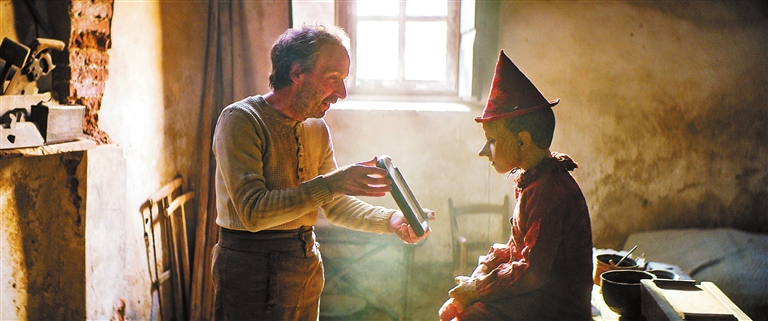
With Roberto Benigni as the woodcutter and rising child star Federico Ielapi as his walking, talking creation carved from a tree trunk, Matteo Garrone’s new “Pinocchio” brings genuine emotion to one of the most ambitious film adaptations to date of Carlo Collodi’s 1883 kid classic. This is a story of metamorphosis, of animals playing the role of human beings and humans morphing into animals. It begins when the lonely Geppetto decides to carve a lifelike puppet. He works on a trunk of wood that has already demonstrated strangely animate properties and soon it takes the form of a human boy. When his creation comes to life, he joyfully proclaims Pinocchio to be his son, and he sells the clothes off his back to buy him a schoolbook so he can learn to read and write. As sweet as he looks in his little red hat and short pants, Pinocchio is a mischievous, disobedient kid who will do anything to avoid going to school. When he runs away from home, Geppetto sets off to find him, promising to search the whole world; this sets the stage for the puppet’s adventures to unfold. The adventures run smoothly into each other, as Pinocchio’s rebellious free spirit reluctantly turns in the direction of school attendance and working for the sake of others. Kidnapped by Fire-Eater, the boss of a puppet theater, Pinocchio is almost eaten alive. Next he meets the pair of swindlers known as the Cat and the Fox, who do their best to wheedle the boy’s money away from him by convincing him to plant it in the ground and grow it into a “money tree.” This leads to the terrible scene of Pinocchio being hung from a tree to die. Enter the Blue Fairy, a playful little girl who nurses him back to life with her oversize companion, the Snail. Pinocchio’s big heart brims over. His display of affection to these maternal figures is especially touching in contrast to his lack of consideration for poor Geppetto. The next time he meets her, the Fairy is a beautiful young woman (French actress Marine Vacth) on a mission to teach him responsible behavior. But he’s just a kid, after all, and it takes him time to learn from his mistakes. When one of his friends runs away to a land where boys can play and have fun all day, he follows him into a trap. The next morning, the children find themselves transformed into donkeys and sold into a life of slavery and hard work. Pinocchio is infamous for his nose growing every time he tells a lie, a potentially boring device that is saved from repetition by appearing in only one scene. His sword-like proboscis is whittled back to size by woodpeckers. At over two hours, the movie feels a little long, particularly in the early scenes. The ending, however, is pure magic. Pinocchio has learned the value of sacrificing himself for those he loves, just as his father has done, and his reward is movingly recounted.(SD-Agencies) | 
